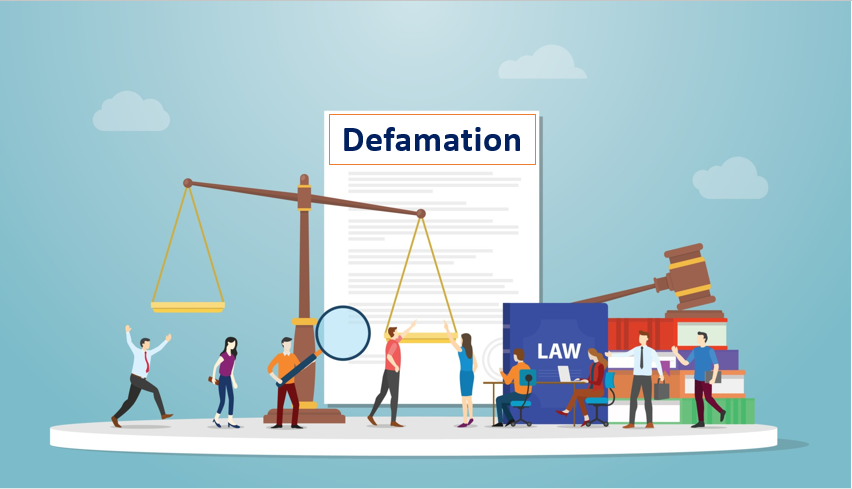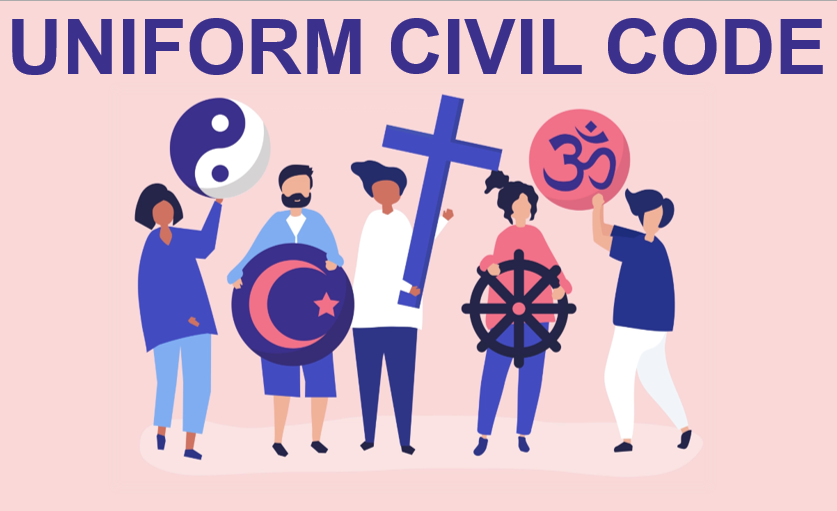Published on: 10th January 2025
Authored by: Anjali Kumari
Amity Law School Noida
Introduction
The legal concept of divorce, which refers to the termination of a marital union by a court or authorized entity, entails a comprehensive process governed by specific legal frameworks that vary by jurisdiction. Divorce laws address fundamental elements such as the grounds for dissolution, the equitable distribution of marital assets, spousal support, child custody, and child support. While these laws have adapted to changing societal dynamics, the procedures and principles governing the dissolution of marriage often reflect the legal and cultural context of the relevant country.
This overview will analyze the primary types of divorce, the grounds for seeking divorce, and the general procedural framework followed in most legal systems. It will also explore critical issues such as spousal support, child custody, and asset distribution. Furthermore, it will address special circumstances such as international divorces and religious considerations, concluding with examining recent trends and reforms in divorce law.
Types of Divorce
Contested Divorce:
A contested divorce occurs when one or both spouses cannot reach an agreement on various aspects of the divorce, such as the division of property, child custody, or alimony. In such instances, the dispute is brought before the court, where both parties must present evidence and arguments to support their respective positions. Due to the involvement of litigation and multiple hearings, a contested divorce is typically lengthier, more intricate, and emotionally draining compared to a mutual consent divorce.
Mutual Consent Divorce:
Conversely, a mutual consent divorce occurs when both parties agree to end the marriage and have resolved key issues such as child custody, property division, and maintenance without the need for judicial intervention. Mutual consent divorce is often seen as the most efficient and amicable approach to divorce, as it facilitates a more streamlined process, significantly reducing time and legal costs. The legal framework for mutual consent divorce typically necessitates that the spouses demonstrate they have lived separately for a specified period and have mutually agreed to terminate the marriage.
Grounds for Divorce
The legal basis for divorce varies significantly depending on the jurisdiction, generally falling into two categories: fault-based and no-fault divorce.
- Fault-Based Divorce
In a fault-based divorce, one spouse must establish that the other engaged in conduct providing sufficient legal grounds for divorce. Common grounds for fault-based divorce include:
- Adultery: One spouse has engaged in an extramarital affair.
- Cruelty: One spouse has subjected the other to physical or mental abuse, endangering their well-being.
- Desertion: One spouse has wilfully abandoned the other without cause for a specified period, often ranging from one to five years, depending on the jurisdiction.
- Imprisonment: If one spouse has been sentenced to a prolonged period of incarceration, the other spouse may petition for divorce.
- No-Fault Divorce
In jurisdictions where no-fault divorce is permitted, neither party is required to prove fault or misconduct. Instead, the grounds for divorce are typically based on the irretrievable breakdown of the marriage or irreconcilable differences. This approach reflects a shift toward recognizing individual autonomy and reducing the adversarial nature of divorce proceedings.
Divorce Procedure
In the context of divorce, the procedural framework may differ by jurisdiction, but most legal systems adhere to a fundamental sequence of steps to ensure an equitable resolution. The following delineates the general procedural framework:
- Filing the Divorce Petition
The divorce process initiates with one spouse (the petitioner) filing a divorce petition in the appropriate family court. The petition outlines the grounds for divorce, whether fault-based or no-fault, and includes requests for child custody, alimony, and property division. In cases of mutual consent divorce, both parties may jointly file the petition.
- Service of Process
Upon filing the petition, the court issues a summons to the other spouse (the respondent) to notify them of the divorce proceedings. The respondent must respond within a specified timeframe, indicating whether they contest or accept the terms in the petition.
- Response and Counterclaim
In a contested divorce, the respondent may file a counterclaim disputing the allegations or propose alternative terms regarding financial settlements, custody, or other matters. This stage significantly shapes the scope of the legal dispute and determines whether mediation or litigation will be necessary.
- Mediation or Counselling
Some jurisdictions encourage or mandate mediation to resolve disputes outside the courtroom. Mediation involves a neutral third party facilitating discussions between the spouses to reach an amicable settlement. In cases involving children, counselling may also be ordered to explore possibilities of reconciliation or address emotional concerns.
- Discovery Process
During the discovery phase, both parties are required to disclose financial documents, evidence, and relevant information regarding assets, debts, and income. This step is crucial for determining the equitable distribution of property, alimony, or child support obligations.
- Negotiation and Settlement
Negotiation allows spouses and their legal representatives to engage in discussions aimed at resolving contested issues. Many divorces are settled at this stage without the need for a trial. Once a settlement agreement is reached, it is presented to the court for approval, following which the final divorce decree is issued.
- Trial Proceedings (in Contested Cases)
If negotiations fail, the divorce case proceeds to trial, where a judge evaluates the evidence presented by both parties. The court makes determinations on all outstanding issues, including child custody, property division, and spousal maintenance. Trial proceedings can prolong the divorce process, often taking months or even years to resolve, depending on the case’s complexity.
- Issuance of Divorce Decree
Once all matters are adjudicated or agreed upon, the court issues a final divorce decree. This document formalizes the dissolution of the marriage and specifies the rights and obligations of each party regarding alimony, custody, and asset distribution. Upon issuance of the decree, both parties are legally free to remarry.
Key Legal Aspects of Divorce
- Spousal Maintenance
Spousal maintenance, commonly referred to as alimony, denotes a financial arrangement in which one spouse provides financial support to the other following a divorce. The court determines the amount and duration of spousal maintenance based on various factors, including the duration of the marriage, the financial circumstances of both parties, the standard of living during the marriage, and the recipient’s ability to achieve financial independence.
- Child Custody and Financial Support
Child custody involves the determination of legal and physical responsibility for the care and upbringing of children from the marriage. Courts typically grant sole custody or joint custody based on the best interests of the child. Custody orders address both physical custody (residence of the child) and legal custody (decision-making authority regarding education and healthcare). Additionally, the non-custodial parent is often required to provide financial support for the child, calculated based on income and the child’s needs.
- Division of Marital Assets
The division of marital property is a complex aspect of divorce. Legal systems generally follow either the community property approach, where all property acquired during the marriage is considered joint property and divided equally, or the equitable distribution approach, where the court divides property based on financial contributions and needs, aiming for a fair and just outcome.
- Prenuptial and Postnuptial Agreements
Prenuptial and postnuptial agreements enable spouses to predetermine the division of assets and liabilities in the event of divorce. These agreements can streamline the divorce process, particularly in high-net-worth marriages, by resolving property division and spousal maintenance disputes in advance.
Special Considerations
- International Divorce
International divorce presents unique challenges, particularly concerning jurisdiction, enforcement of foreign divorce decrees, and the division of assets in multiple countries. Couples with cross-border ties must navigate international treaties and local laws to ensure recognition of the divorce in all relevant jurisdictions.
- Religious Divorce
In certain jurisdictions, religious law may significantly impact the divorce process. For example, in Islamic law, a husband can initiate divorce through “talaq,” while Jewish law requires both parties to obtain a “get” (a religious divorce decree) for the dissolution of the marriage within the community.
Conclusion
The laws and procedures governing divorce, while subject to jurisdictional variations, fundamentally seek to achieve an equitable and legally sound resolution to the termination of marriage. Whether through mutual consent or contested proceedings, the legal framework ensures the clear delineation of rights and obligations for both parties, with specific emphasis on alimony, child custody, and asset division. As societal attitudes toward marriage and divorce continue to evolve, legal processes are also evolving, with many jurisdictions adopting reforms aimed at streamlining the divorce process and reducing potential conflicts.
Ultimately, divorce law aims to balance the legal, emotional, and financial needs of all parties involved, offering a path forward as individuals rebuild their lives post-marriage. The transition from fault-based to no-fault divorces reflects changing societal attitudes towards personal autonomy in marriage and emphasizes the recognition that marriages can end without assigning blame to either party. The introduction of no-fault divorce laws has also led to a reduction in the adversarial nature of the divorce process. However, divorce often carries significant financial implications, particularly in the division of marital assets, debts, and property, which is often contentious. Legal systems aim to balance the financial interests of both parties, taking into account the contributions and needs of each spouse. Alimony, or spousal support, also plays a significant role in divorce, ensuring that the financially dependent spouse is not disadvantaged following the dissolution of the marriage. Courts consider various factors when awarding spousal support, ensuring that divorce does not create undue financial hardship for either party. In cases involving children, the legal framework prioritizes the best interests of the child in custody arrangements, ensuring that their emotional, educational, and developmental needs are met. Additional complexities arise in special cases such as international divorces, religious divorces, and military divorces, necessitating careful navigation of jurisdictional boundaries and religious considerations.
As divorce laws continue to evolve, many jurisdictions are adopting measures that streamline the divorce process, reduce court involvement, and encourage mediation and alternative dispute resolution mechanisms. These reforms reflect an understanding that divorce, while emotionally challenging, can be resolved with dignity, fairness, and efficiency when supported by a well-defined legal structure. Ultimately, the primary objective of divorce law is to provide a fair and just resolution that allows both parties to move forward, respecting their legal rights while ensuring the adequate protection of any children involved. As societal changes occur, the legal frameworks governing the dissolution of marriage will adapt to new realities while maintaining a focus on justice and equity.


